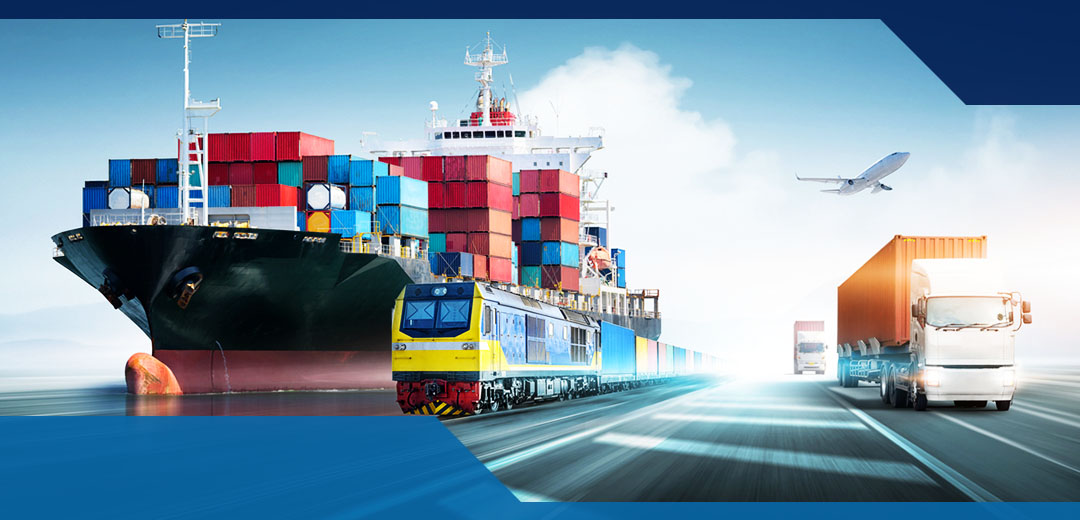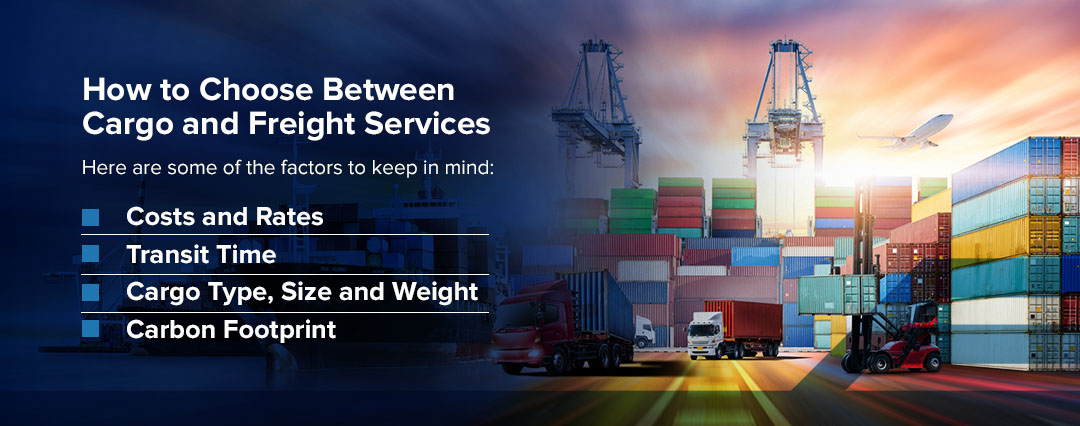
The terms freight and cargo are often used when transporting goods and commodities. The terms may seem the same for people starting with exporting and importing since the line between the two terms is often blurred. This can lead to confusion when discussing transport with logistics companies.
However, there are differences between cargo and freight. Knowing what cargo is can help eliminate confusion and simplify your shipping process.
The Traditional Difference Between Cargo and Freight
Traditionally, the difference between freight and cargo has been in how goods are transported. Cargo refers to goods moved overseas via sea and air. This is why we have the terms cargo ship and plane. It is usually used in the context of shipping, but commodities or goods transported by land can also be referred to as cargo. Cargo only refers to the transporting of commodities.
Freight has traditionally been used to describe goods transported overland by train or truck. Similar to cargo, goods transported by sea or air can also be referred to as freight. Logistics companies use freight trains and trucks rather than cargo trucks and trains.
The Contemporary Difference Between Cargo and Freight
Over time, these two terms have become almost interchangeable when referring to goods being shipped by any method these days. The base difference today is that cargo is the actual goods being transported, and freight describes the payment, charge or rate for transportation services. For example, air freight is a common logistics term since it refers to the cost or charge for shipping goods by air.
There are a few similarities between cargo and freight. Both terms refer to the transportation of goods and commodities. Cargo and freight are also used almost exclusively for commercial items. Cargo can be called freight if referring to both the goods and the cost of shipping the goods. There is one exception. Mail — letters, parcels or packages — is considered cargo regardless of how it is transported.
The line between the two terms is blurring even more today as the terms continue to be used interchangeably. However, many logistics companies and international freight forwarders use the traditional definitions of each term.

How to Choose Between Cargo and Freight Services
Once you know the difference between cargo and freight, you must choose the suitable services for your transport needs. You’ll want to consider several factors when making your decision, from cost to reliability. Here are some of the factors to keep in mind:
Costs and Rates
Freight rates vary between types of transport. The costs are calculated depending on the weight and volume of your cargo, how far it needs to travel, route planning and how full a container is. Air freight is the most expensive freight option, but it is also the fastest. If you are on a deadline and have the budget, shipping cargo by air freight is the best option. If you have more time and a tighter budget, shipping by sea may be better for you as it is significantly cheaper than air freight.
Each type of transit has different ways to work out the freight cost:
- Air freight: This is calculated using chargeable weight, which is the weight and size of a shipment combined.
- Sea freight: Carriers usually charge sea fright by the container. They may also factor weight into the cost.
- Road freight: These charges are usually based on weight and distance.
In addition to the transport costs, air and sea freight have customs and destination fees. Road freight may have toll costs between states and countries. Warehousing costs also differ by country, transport method and shipment size. Warehousing at seaports may be more expensive than road freight warehousing.
Transit Time
Your deadline will be a significant factor when considering shipment options. Air freight is the fastest. Cargo can be transported anywhere between eight and 72 hours, depending on the distance. Some longer or alternate routes can take up to seven days, which is still quicker than most ocean shipping.
Ocean transit takes longer. A major ocean freight route can take between 13 and 15 days, depending on the weather and speed of the ship. Longer routes can take up to 2 months. Road freight can take anywhere from a few hours to a few days based on the distance, congestion at tolls and stops the vehicle takes.
Reliability is also a factor that affects transit times. Airlines usually stick to tight schedules, and flights can depart daily depending on the need. Ships typically have a weekly schedule, so you must organize and deliver your cargo on time to prevent costly delays. Road freight can experience delays due to congestion, weather conditions and even civil action such as protests.
Cargo Type, Size and Weight
What you are shipping, its weight and size will significantly impact your transport options. Air freight cargo has the most limitations on the shipment size due to the limited space on cargo planes. Most air freight carriers also restrict the type of cargo they carry. They won’t transport hazardous materials, including flammable commodities, corrosives, explosives, biohazardous materials and some medical supplies unless they comply with stringent guidelines.
Ocean freight can handle significantly larger and heavier shipments in one trip, while road freight can carry smaller loads. Each transport has safety, health and quality guidelines you must follow when transporting hazardous materials.
The fragility and value of your goods are also essential. Air and land transport are preferred for fragile, high-value cargo.
Carbon Footprint
The demand for greener transport methods has increased as consumers become increasingly aware of their carbon footprints. As a result, many companies are looking for the transport method with the lowest carbon footprint. According to carbon dioxide (CO2) emissions, ocean freight has the smallest footprint emitting 0.0403 kg of CO2 per ton-mile. Alternatively, air freight has the largest carbon footprint as it emits 0.8063 kg of carbon dioxide per ton-mile. Rail freight emits 0.1048kg, and road freight emits 0.1693 kg of carbon dioxide per ton-mile.
While sea freight seems to be the most sustainable transport method, other pollutants must be considered. In addition, if a cargo ship sinks or runs aground, there is the potential for an oil spill. Additionally, your deadline, budget and cargo type will still play a role in your chosen transport method. If you are on a tight deadline, air freight is ideal despite its carbon footprint.
Partner With EMOTrans for Expert Cargo and Freight Services
Our goal is to simplify logistics and freight forwarding for any company. We understand every aspect of logistics, including the difference between cargo and freight. Our logistics experts work closely with you to understand your freight forwarding needs and devise an efficient supply chain solution that works for you.
Request a quote today to learn more!

